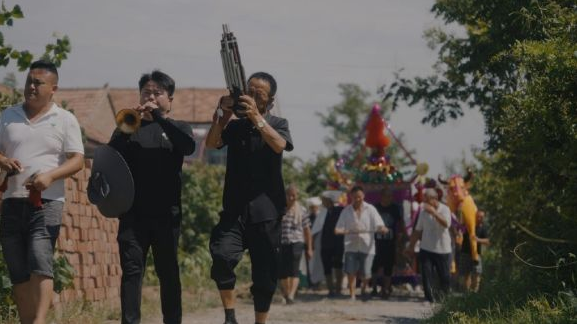The uncle uses a suona to feed four generations, from the new life to the death, the suona is never absent
The sound of the suona is worth 10,000 taels of gold, and when the suona is blown, great joy and great sorrow! Recently, the "Caojiaban" suona family from Peixian County, Jiangsu Province has been on the hot search. Relying on suona, Cao's elders have supported four generations of people, and the art of suona has also been passed down. Suona, with a history of more than a thousand years, has accompanied the life course of generations of Chinese people. From birth to death, Suona is never absent.

Suona is a traditional Chinese double-reed woodwind instrument. Its tone is strong and majestic, with softness in its rigidity, and rigidity in its softness. There are eight holes in the tube body, mostly made of rosewood and sandalwood, in the shape of a cone. The top is equipped with a double reed made of reed, which is connected to the wooden tube body through a copper or silver core, and a copper tube is covered at the lower end. made bowl. Suona is called "trumpet" in Henan and Shandong, "dida" in Guangdong, and "advocacy" in Taiwan.
The biggest feature of suona is that it can control the whistle with the mouth to make changes in volume, pitch, and timbre, as well as the use of various techniques. The traditional suona includes a hundred birds facing the phoenix, family portraits, carrying bridal sedan chairs and other classic songs. In 2006, suona art was approved by the State Council to be included in the first batch of national intangible cultural heritage list.
Suona art has a long history. As early as the 3rd century AD, Suona was introduced into my country from Eastern Europe and West Asia with the opening of the Silk Road.
There are records of suona in ancient books of Ming Dynasty. "Anyone who holds a trumpet flute is playing suona." Qi Jiguang, a military general in the Ming Dynasty, also used suona in military music. In the late Ming Dynasty, suona had already played an important role in opera music. It was used to accompany singing and play cutscenes.
The Qing Dynasty was a prosperous period for suona art, and it was not uncommon for artists with more than ten generations of family heritage. In addition to local operas, a large number of documents in the Qing Dynasty also recorded the application of suona in the court. In the Qing Dynasty, Suona music was already enjoyed by both the refined and the popular.
In the first half of the 20th century, Suona was still in a period of prosperity. In the second half of the year, due to the restrictions on the folk activities that suona music is attached to, the effect of "if the skin does not exist, the hair will be attached", suona music fell into a trough.
Since the 1980s, folk activities have gradually recovered, coupled with the correct guidance of relevant government departments, suona art has shown a flourishing and prosperous situation.
 渝公网安备 50010702504639号
渝公网安备 50010702504639号